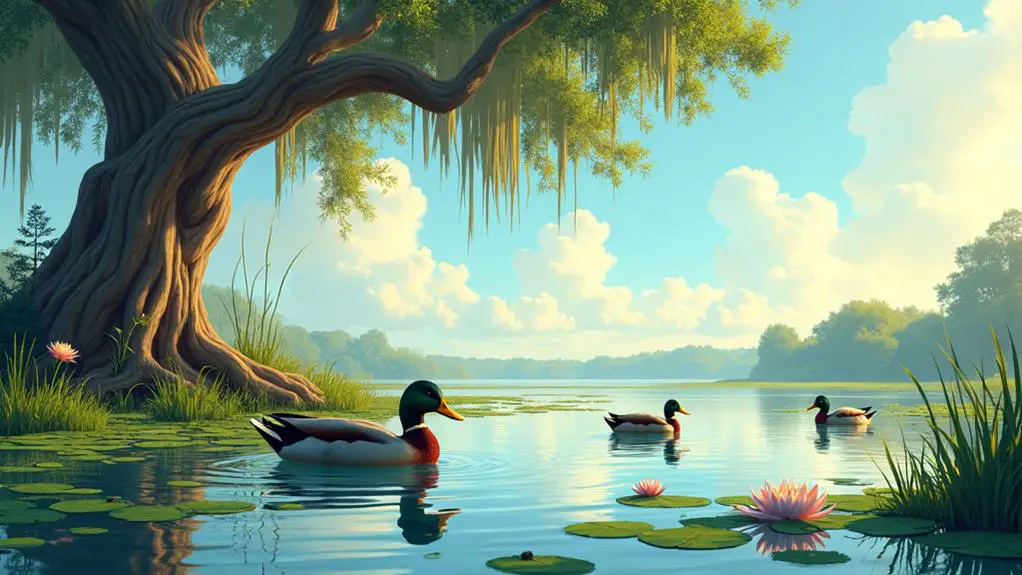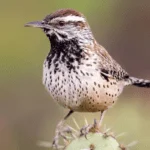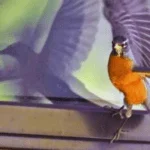As you wander through Florida’s picturesque wetlands, you’ll likely encounter some feathered friends that are a bit more intriguing than they initially let on. Let’s just say these birds have a few tricks up their sleeves – or rather, in their quacks. With over 15 species calling the Sunshine State home, you might assume you know what to expect from these familiar fowl. But trust us, there’s more to ducks than meets the eye. From their remarkable migrations to their cunning escape tactics, you’re about to discover that there’s a whole lot more to these birds than their adorable waddles.
Key Takeaways
- Mottled Ducks, year-round Florida residents, thrive in shallow, vegetated areas with access to water, a unique habitat preference.
- Florida’s ducks have evolved remarkable physical adaptations, including streamlined bodies and specialized feathers, to conserve energy and thrive in wetlands.
- Blue-winged Teal, a migratory species, exhibit incredible celestial navigation skills, flying up to 50 miles per hour and using the sun, moon, and stars to guide their journeys.
- Ducks in Florida engage in elaborate courtship displays, such as whistling, preening, and head-shaking, to attract mates and strengthen pair bonds.
- Female ducks in Florida use predator mimicry, pretending to be injured or weakened, to distract predators and lead their young to safety.
Florida’s Most Common Duck Species
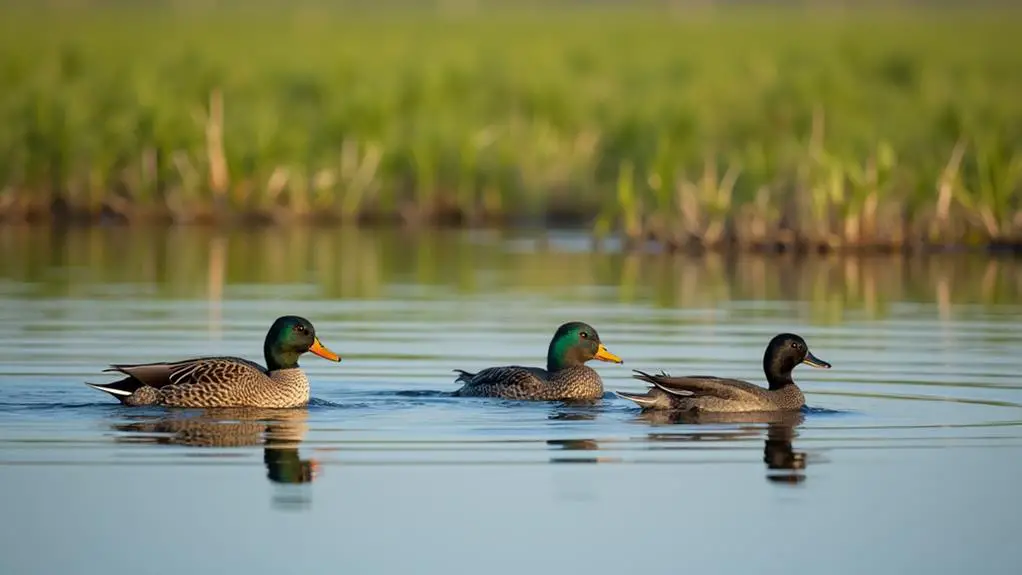
Three species of ducks dominate Florida’s wetlands: the Mottled Duck, the Blue-winged Teal, and the American Coot.
You’ll find these ducks thriving in the state’s diverse wetland habitats, from freshwater marshes to saltwater estuaries.
The Mottled Duck, a year-round resident, prefers shallow, vegetated areas with access to water.
In contrast, the Blue-winged Teal, a migratory species, favors open, grassy wetlands during its wintering months.
The American Coot, another year-round resident, occupies a wide range of wetland habitats, from freshwater lakes to brackish mangrove swamps.
These duck habitats, often referred to as wetland wonders, provide essential resources for foraging, breeding, and shelter.
As you explore Florida’s wetlands, you’ll likely encounter these species, each playing a vital role in the ecosystem.
Unique Adaptations for Survival
As you observe these duck species thriving in Florida’s wetlands, you may wonder how they’ve adapted to survive in their unique environments.
One key adaptation is their ability to reduce water resistance. Ducks have evolved a streamlined body shape, which helps them cut through the water with ease. Their feathers, too, play a crucial role in reducing drag. The microscopic structure of their feathers creates a thin layer of air next to their skin, allowing them to glide effortlessly through the water.
Feather maintenance is another essential adaptation for ducks. They spend a significant amount of time preening, which involves cleaning and oiling their feathers.
This process helps to maintain the integrity of their feathers, keeping them waterproof and insulating. In addition, preening also helps to remove parasites and debris, ensuring that their feathers remain healthy and functional. By minimizing water resistance and maintaining their feathers, ducks are able to conserve energy and thrive in Florida’s wetlands.
These adaptations are a testament to the remarkable resilience of these birds, allowing them to flourish in their aquatic environments.
Migratory Marvels of the Sky
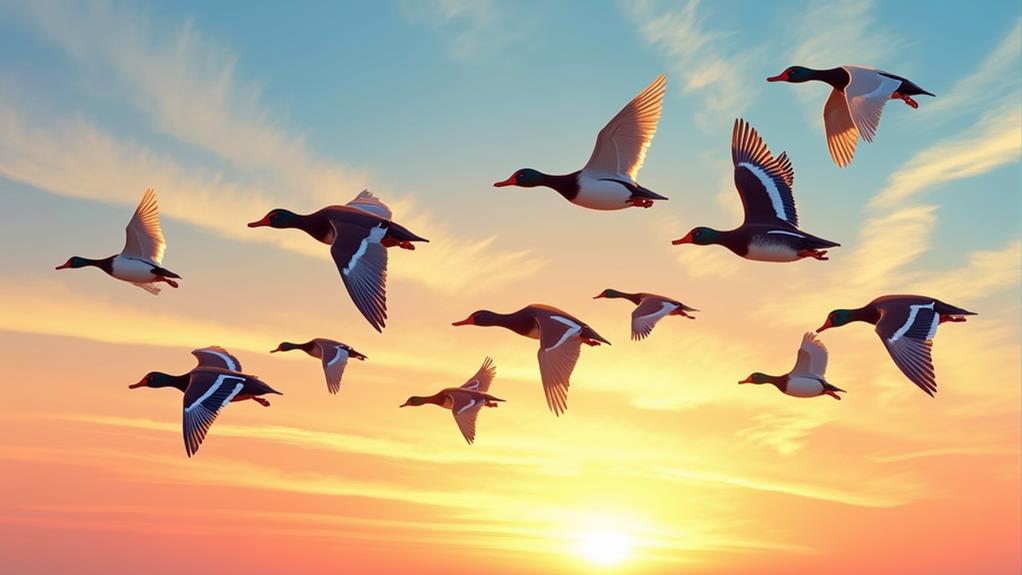
As you explore the world of migratory ducks, you’ll find that these birds exhibit complex flocking patterns, with individuals maintaining precise positions within the formation to reduce wind resistance and conserve energy.
You’ll also discover that some duck species are incredibly fast flyers, reaching speeds of up to 50 miles per hour during their migrations.
Furthermore, you’ll learn that ducks possess remarkable celestial navigation skills, using the sun, moon, and stars to guide their journeys across thousands of miles.
Flocking Patterns Revealed
Ducks exhibit intriguing flocking patterns during migration, with researchers uncovering the intricate dynamics behind these aerial formations.
As you observe these formations, you’ll notice that ducks don’t simply fly together; they engage in complex social interactions that facilitate efficient travel. Duck sociality plays a crucial role in flock dynamics, with individuals taking turns leading the formation and rotating positions to reduce wind resistance and conserve energy.
Researchers have identified several key factors influencing flock dynamics, including the number of birds, their speed, and the distance between them.
By flying in a V-formation, ducks can capitalize on aerodynamic benefits, such as reduced air resistance and increased lift. This formation also enables them to maintain visual contact, allowing them to respond to threats and navigate more effectively.
As you watch a flock of ducks migrate, you’re witnessing a remarkable display of evolutionary adaptation, where individual birds work together to overcome the challenges of long-distance travel.
Speed Demons of Sky
You’re likely familiar with the impressive speeds reached by migratory birds, but you might be surprised to learn that some duck species can fly at astonishing rates of up to 50 miles per hour.
These feathered fliers are truly airborne acrobats, capable of performing incredible aerial stunts with ease. When migrating, ducks often fly in V-formation, which helps reduce wind resistance and conserve energy.
This formation also allows them to take advantage of aerodynamic benefits, such as lift and thrust, generated by the wing movements of the lead bird.
Some duck species, like the wood duck and the merganser, are particularly adept at reaching high speeds.
They achieve this through powerful wingbeats, which can reach up to 5 beats per second. This rapid wing movement creates a vortex of air above and below the wing, generating additional lift and thrust.
As a result, these ducks can maintain high speeds over long distances, making them some of the fastest birds in the sky.
Celestial Navigation Skills
The night sky serves as a celestial map for many duck species, guiding them during their migrations.
As you watch them soar across the sky, you might wonder how they navigate their way.
The answer lies in their impressive celestial navigation skills. Ducks have an innate ability to use the position of the sun, moon, and stars to determine their direction and location.
- Ducks use the polarization of light to detect the direction of the sun, even when it’s not visible.
- They can detect the Earth’s magnetic field and use it to orient themselves during migration.
- Some duck species have been found to have magnetite, a magnetically sensitive mineral, in their brains, which helps them detect the Earth’s magnetic field.
- Ducks also use visual cues like the pattern of stars and constellations to guide their migration.
- Research has shown that ducks can even use the olfactory cues, like the smell of certain plants, to help navigate during their migration.
This remarkable ability to navigate using celestial bodies is often referred to as “duck astronomy.”
It’s an essential skill that allows them to complete their star migration, traveling thousands of miles each year with remarkable accuracy.
Duck Courtship and Mating Rituals
Duck Courtship and Mating Rituals
Several species of waterfowl engage in elaborate courtship displays to attract mates and strengthen pair bonds. You’ll witness feathered flirtation in action as ducks perform intricate mating dances. These displays are crucial for establishing and maintaining pair bonds, which can last for multiple breeding seasons.
| Species | Courtship Display | Description |
|---|---|---|
| Wood Duck | Whistling and Preening | Males whistle and preen their feathers to attract females. |
| Mottled Duck | Head-Shaking and Neck-Stretching | Males shake their heads and stretch their necks to impress females. |
| Blue-Winged Teal | Whistling and Wing-Flapping | Males whistle and flap their wings to attract females. |
You’ll notice that different species have unique courtship displays, but they all serve the same purpose: to attract a mate and strengthen pair bonds. By observing these displays, you’ll gain a deeper appreciation for the complex social behaviors of ducks in Florida.
Quacking Communication Secrets
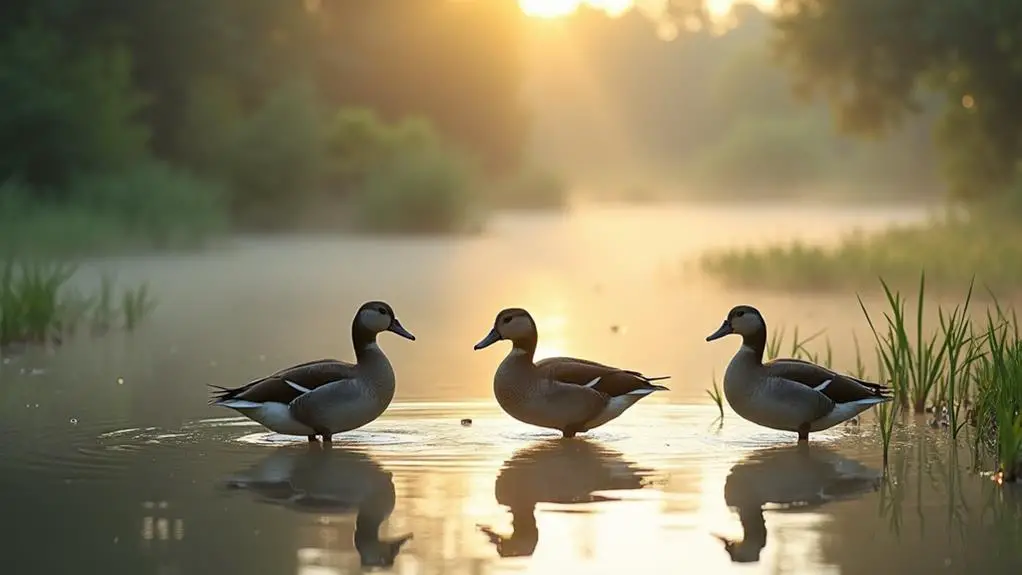
Beyond the elaborate courtship displays, ducks rely on a sophisticated communication system to convey vital information.
As you observe ducks in Florida, you’ll realize that their quacks are more than just noise – they’re a complex language that allows them to convey emotions, warnings, and even location.
You might be surprised to learn that ducks have a distinct vocabulary, with different quack dialects depending on the species and region.
Researchers have identified over 12 distinct calls, including:
- Contact calls: used to maintain contact with other ducks, especially between mothers and ducklings
- Alarm calls: loud, urgent quacks to alert others to predators or threats
- Feeding calls: soft, nasal quacks to signal the discovery of food
- Brood calls: gentle, clucking sounds used by mothers to keep their ducklings close
- Courtship calls: elaborate, musical quacks used during mating rituals
Surprising Predator Evasion Tactics
When observing ducks in their natural habitat, you’ll witness their impressive agility and quick reflexes, essential for evading predators.
One surprising tactic they employ is predator mimicry. Female ducks will often mimic the calls of predators, such as hawks or owls, to deceive their young and lead them away from potential threats. This clever strategy allows them to protect their brood without revealing their own presence.
Another evasion tactic is the use of duck decoys. When faced with a predator, ducks will sometimes pretend to be injured or weakened, making themselves appear as an easy target.
While the predator is distracted by the decoy, the rest of the group can escape. This decoy strategy is often used in conjunction with rapid flight and agility, allowing ducks to quickly flee from danger.
Ducks have also been observed using environmental features to their advantage. They’ll hide in vegetation, use shadows to conceal themselves, or fly low over water to avoid detection.
FAQs: Ducks in Florida
Can Ducks See in Color or Only in Black and White?
You’re wondering if ducks see in color or black and white? Well, research shows that ducks possess color vision, with a visual acuity similar to humans, allowing them to distinguish between various colors and shades, but not as vividly as we do.
Do Ducks Have Belly Buttons or Navels?
You wonder if ducks have belly buttons or navels; the answer lies in their embryonic development. As they hatch, the umbilical cord is absorbed, leaving no visible navel, but some ducks may display feathered scars, debunking navel myths.
Can Ducks Swim in Saltwater or Only Freshwater?
You’re wondering if ducks can swim in saltwater or only freshwater; surprisingly, most duck species possess a saltwater adaptation, allowing them to explore oceanic environments and swim in saltwater, although some may prefer freshwater habitats.
Do Ducks Have Teeth or Any Tooth-Like Structures?
You might assume ducks have teeth, but surprisingly, they don’t! Instead, their beak structure features a hard, keratin-based bill shape, perfectly adapted for foraging, grasping, and filtering food, eliminating the need for teeth or tooth-like structures.
Can Ducks Fly Backwards or Only Forward?
You’re wondering if ducks can defy aerodynamic norms by flying backwards. Unfortunately, their wing flexibility doesn’t allow for reverse flight; due to flight limitations, ducks can only propel themselves forward, with wings beating in a specific arc.
Conclusion: Ducks in Florida
As you explore Florida’s wetlands, remember that “still waters run deep.” Beneath the surface, ducks have evolved remarkable adaptations to thrive in their environments. From their specialized feathers to their sophisticated communication systems, ducks are true marvels of nature. By delving into their world, you’ve gained a deeper appreciation for these fascinating creatures. Now, venture forth and observe them in their natural habitats – you never know what surprising facts you might uncover!

